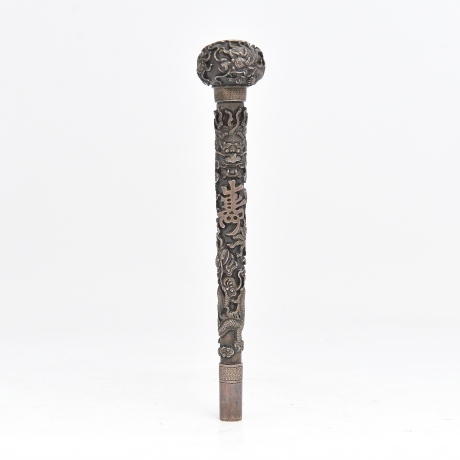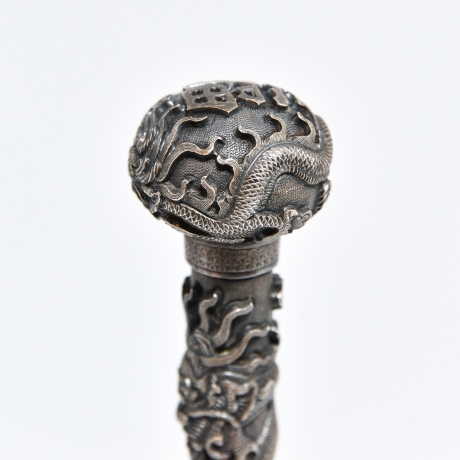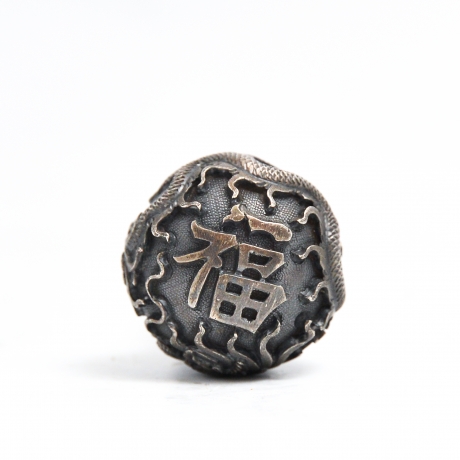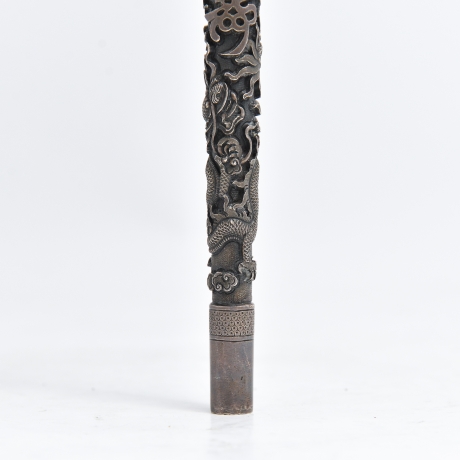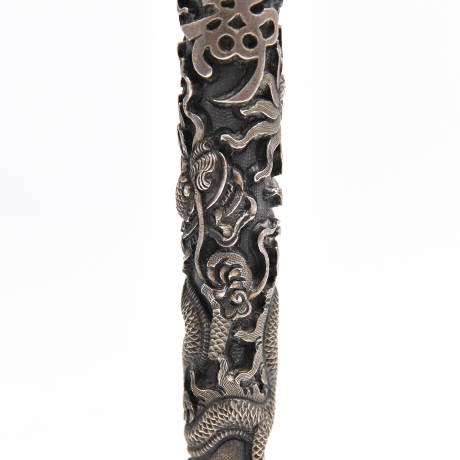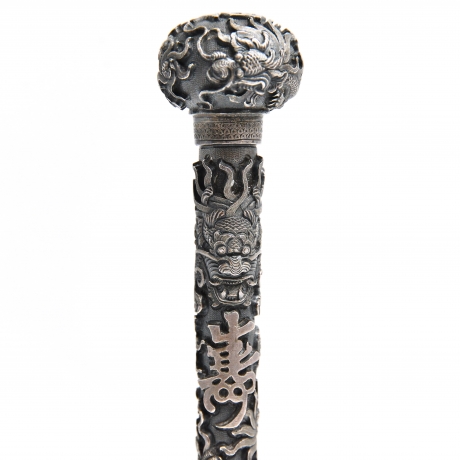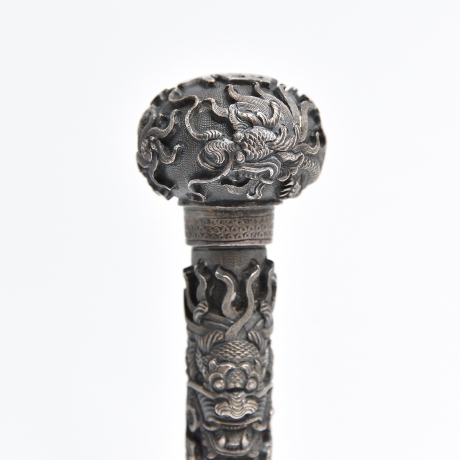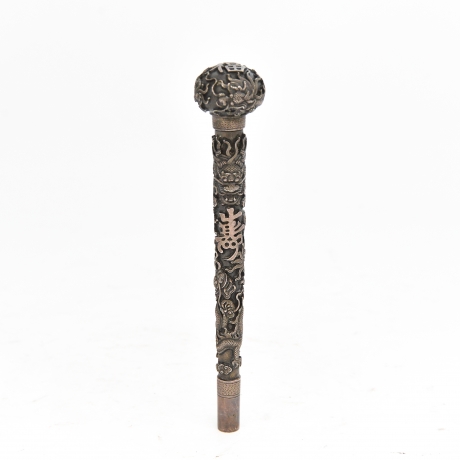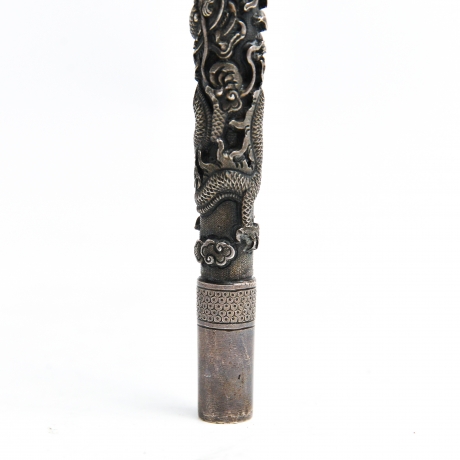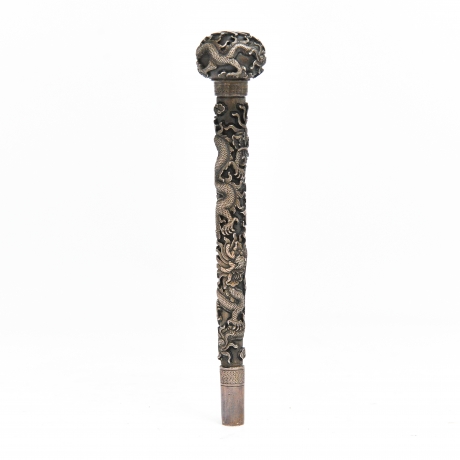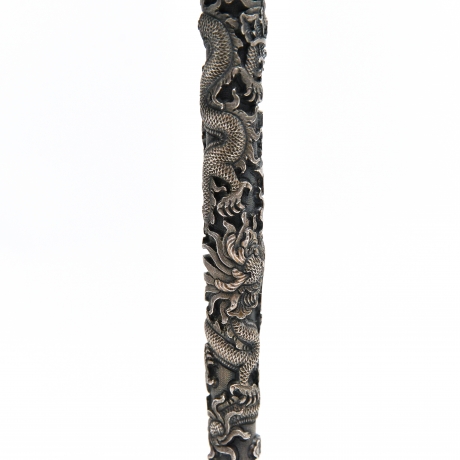| Epoca: | Fine '800/ Primi '900 | Misure: | H 20,5 x Ø 3,5 cm |
| Per info: | VENDUTO |
Grande manico di bastone decorato in altorilievo con drago, risalente alla fine dell'800/primi del '900. Il Drago Asiatico, chiamato anche Imoogi, è caratterizzato da un corpo lungo serpentiforme, ricoperto di peluria e di squame, senza ali ma comunque capace di volare - anche se si dice [senza fonte] che questi draghi possano farsi crescere le ali se vivono abbastanza a lungo. Ha il muso da coccodrillo, il corpo da serpente, la criniera e gli artigli da leone; tipicamente possiede sul muso dei lunghi baffi filiformi e una cresta che lo percorre in tutta la sua lunghezza, lungo la schiena. Le sue corna sono simili a quelle dei cervi, e ricoperte da una finissima peluria. È considerato un essere positivo e di grande saggezza, tanto che il trono dell'imperatore cinese era detto il "Trono del Drago", e la sua faccia il "Volto del Drago". Le credenze cinesi affermano anche che alla morte l'imperatore volasse in cielo sotto forma di drago, e che quando un drago si alza in volo la pressione delle zampe sulle nuvole provoca la pioggia. Infatti il re-drago cinese Lung Wang è considerato colui che provoca la pioggia. Nell'antica era Nordica (800-1300 d.C.) il drago orientale era divenuto una vera e propria divinità.
Large stick handle decorated in high relief with dragon, dating back to the late 1800s / early 1900s. The Asian Dragon, also called Imoogi, is characterized by a long serpentiform body, covered with hair and scales, without wings but still capable of flying - even if it is said [without source] that these dragons can grow their wings if they live long enough long. It has the crocodile face, the snake body, the mane and the lion claws; typically it has long, threadlike mustaches on the muzzle and a crest that runs along its entire length, along the back. Its horns are similar to those of deer, and covered with a very fine down. He is considered a positive and highly wise being, so much so that the throne of the Chinese emperor was called the "Dragon Throne", and his face was the "Face of the Dragon". Chinese beliefs also claim that at death the emperor flew into the sky in the form of a dragon, and that when a dragon soars up, the pressure of its paws on the clouds causes rain. In fact, the Chinese dragon king Lung Wang is considered to be the one causing the rain. In the ancient Nordic era (800-1300 AD) the eastern dragon had become a real divinity.
Categorie:

